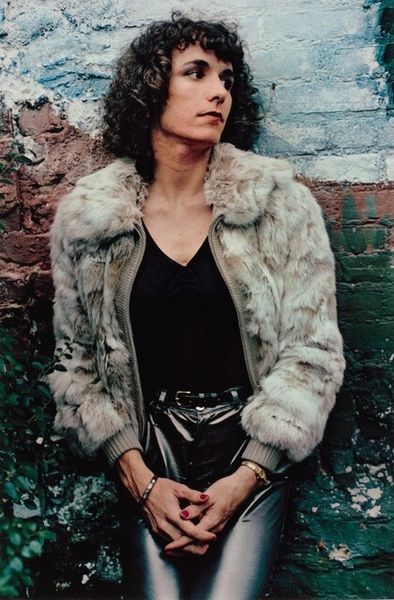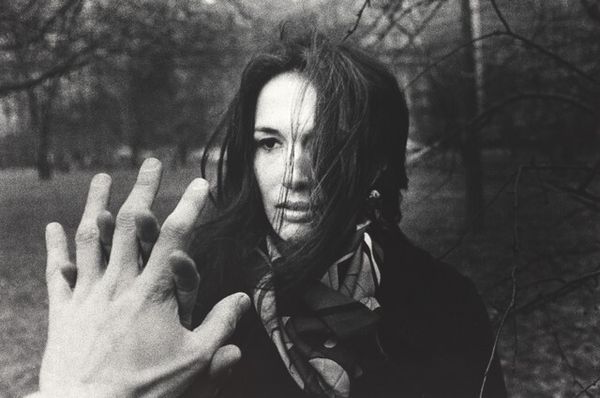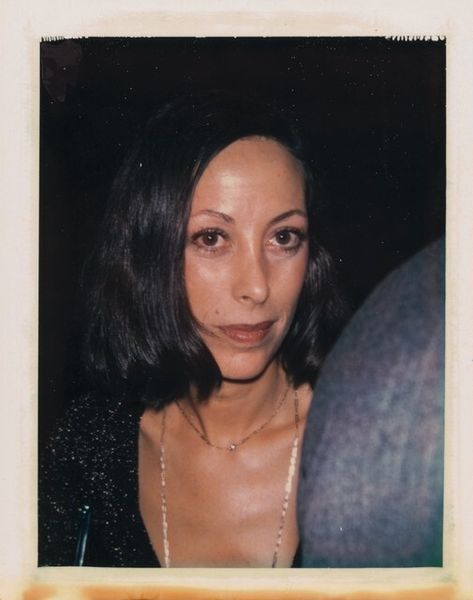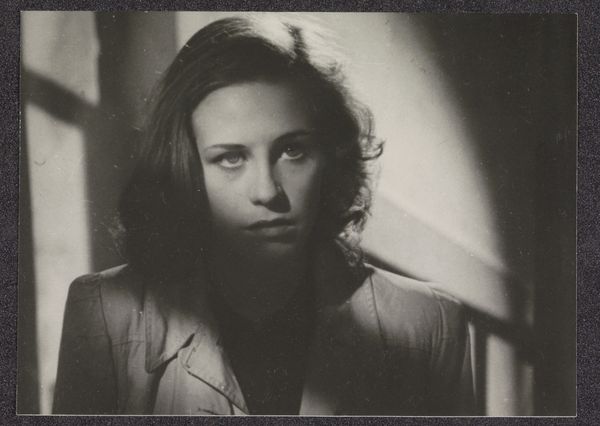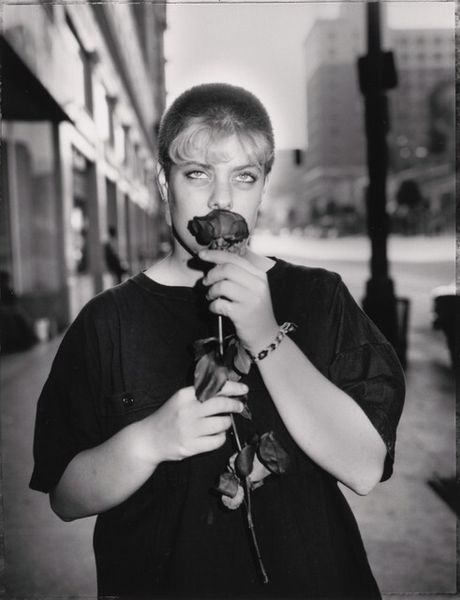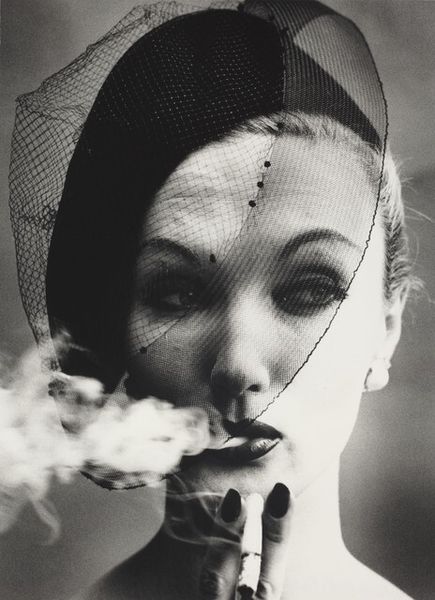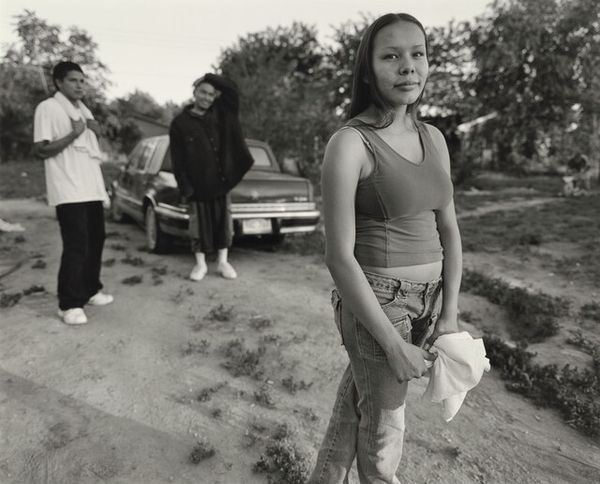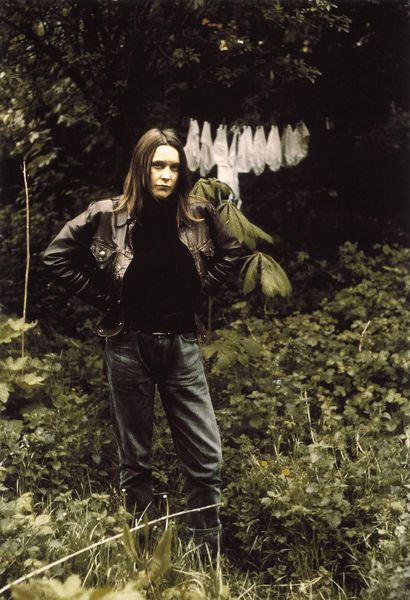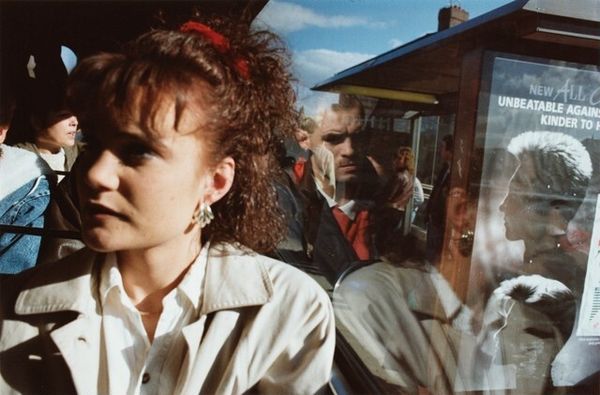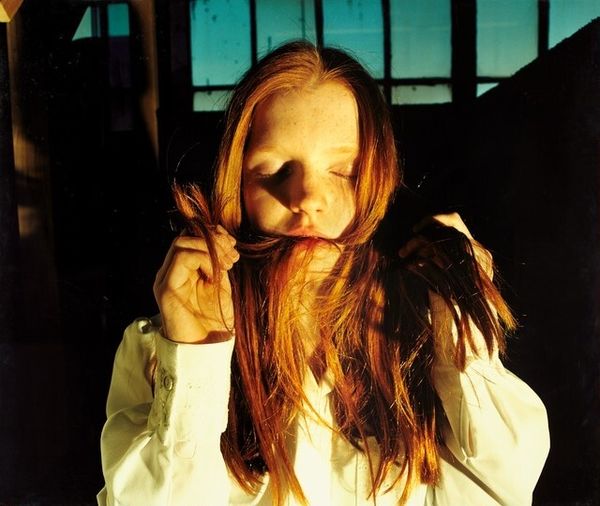
c-print, photography
#
portrait
#
contemporary
#
c-print
#
photography
#
intimism
#
film
#
realism
Dimensions: image: 30.48 × 20.32 cm (12 × 8 in.) sheet: 35.56 × 27.94 cm (14 × 11 in.)
Copyright: National Gallery of Art: CC0 1.0
Curator: Here we have Clarence Williams’ C-print photograph, "Hollywood," created in 1999. It strikes me immediately with its stark simplicity. Editor: I’m drawn to the overwhelming darkness that seems to press down on the figure. The cool light creates a real sense of melancholy. Curator: It is a poignant work. Williams was particularly focused on portraying individuals existing on the margins. You know, considering his practice and his attention to the tools, the dark spaces surrounding her suggests an interrogation of the actual apparatus used to make cinema. What does she have access to as a subject? What material opportunities? Editor: That makes sense. Visually, she's definitely in the shadows, literally and perhaps metaphorically. There's a feeling of being unseen, which resonates with broader cultural symbolism around Hollywood—the price of fame, the invisible laborers, the cost of dreams... Curator: Right. And think about the choice of materials. C-prints are typically used for commercial purposes. Is the photographic process complicit in its own representational limits, or can Williams subvert that here? Editor: Her gaze certainly carries the weight of that potential subversion. She looks to the side, avoiding the camera’s implicit invitation. Curator: Exactly! In her quiet defiance there is a resistance to typical commercial expectations of the photographed figure. Williams gives a rare and very specific agency here, wouldn’t you say? Editor: I think that's a very compelling idea. She isn't simply a passive subject but actively resists being categorized. This image leaves us with lingering questions, echoing the complexities of representation and the lived realities it touches upon. Curator: I agree. This examination has been illuminating, and reminds me to reconsider photographic realism and the systems by which people are seen, but not necessarily heard.
Comments
No comments
Be the first to comment and join the conversation on the ultimate creative platform.
